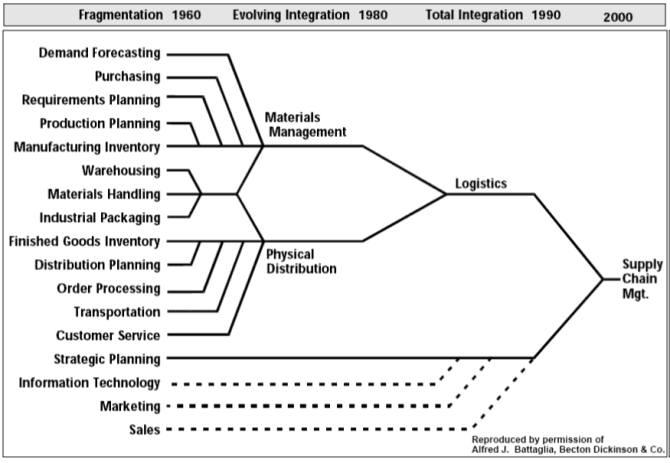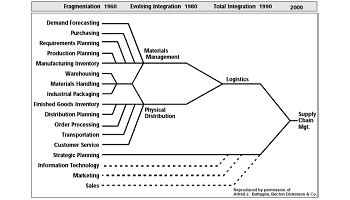It is important to know the SCM concept because many people confuse supply chain with logistics. So they reduce the relevance and scope of supply chain. How we are showing the concept of supply chain is quite broad, and that means supply chain is without any doubt one of the main pillars to focus on turnaround projects. So first at all, let us review the SCM concept.
According to APICS body of knowledge, they distinguish between:
- Production & Inventory Management (CPIM): Operations performed inside the four walls of the organization (demand planning, procurement, supplier management, material requirement planning, capacity planning, S&OP planning, master scheduling, performance management, quality control, continuous improvement)
- Supply Chain Management (CSCMP): End-to-end supply chain from the first customer to end customers (CRM, SRM, international trade, logistics, IT SCM).
The rest of the main supply chain organizations offer a much broader definition of supply chain.
CSCMP defines SCM as the planning and management of all activities involved in sourcing and procurement, conversion, and all logistics management activities (demand planning, procurement & supply management, manufacturing & service operations, transportation management, inventory management, warehouse management, order fulfillment & customer relationship).
Scmi says that SCM is the integration of key business processes from end-user through original suppliers that provides products, services, and information that add value for customers and other stakeholders (CRM, SRM, customer service management, demand management, order fulfillment, manufacturing flow management, product development and commercialization, return management).
In order to understand the difference between logistics and SCM we are showing the logistics definition provided by CSCMP. Logistics management is that part of supply chain management that plans, implements, and controls the efficient, effective forward and reverses flow and storage of goods, services and related information between the point of origin and the point of consumption in order to meet customers’ requirements.
Alfred J Battaglia shows us a very interesting view of the evolution of SCM concept

